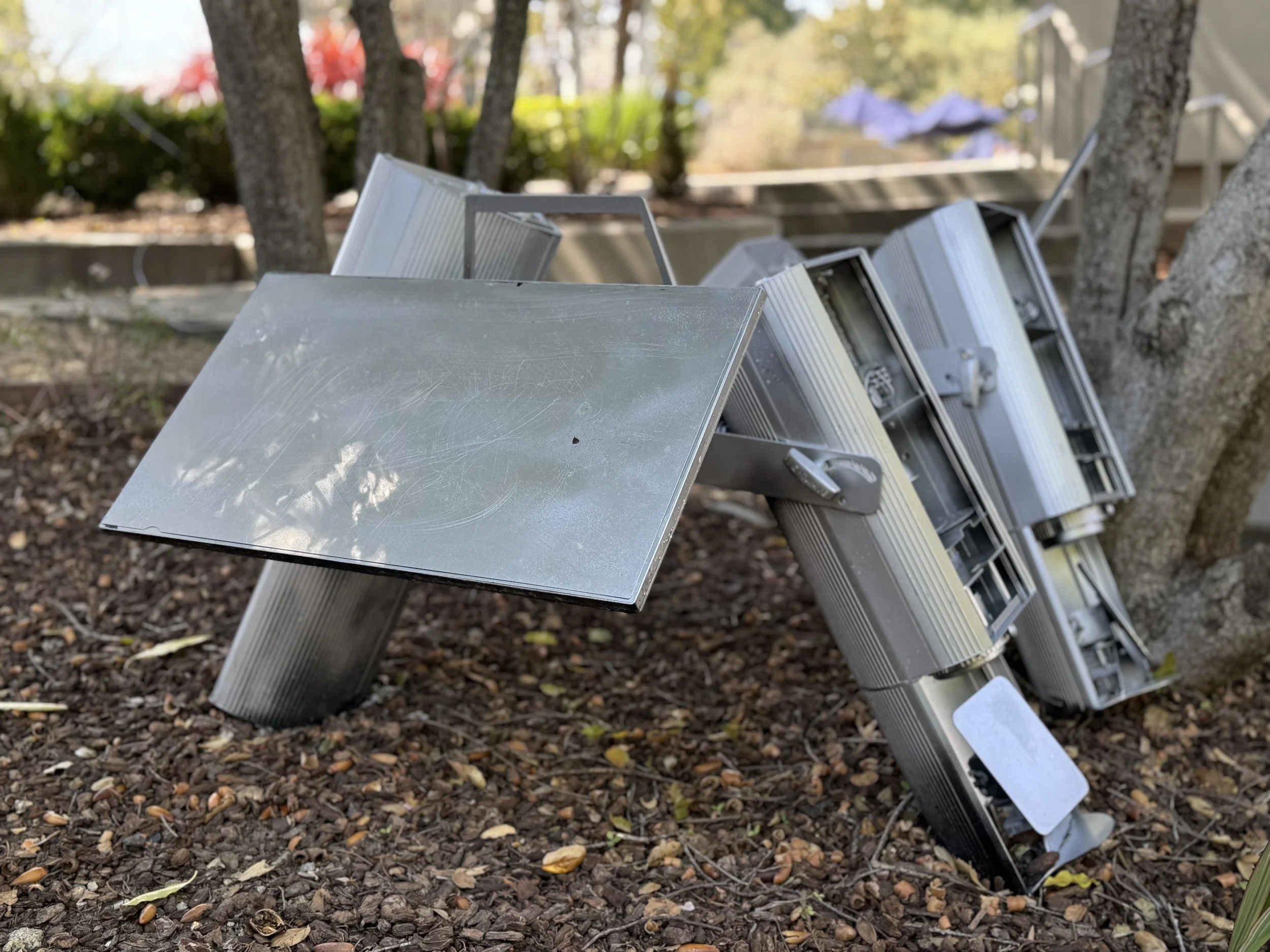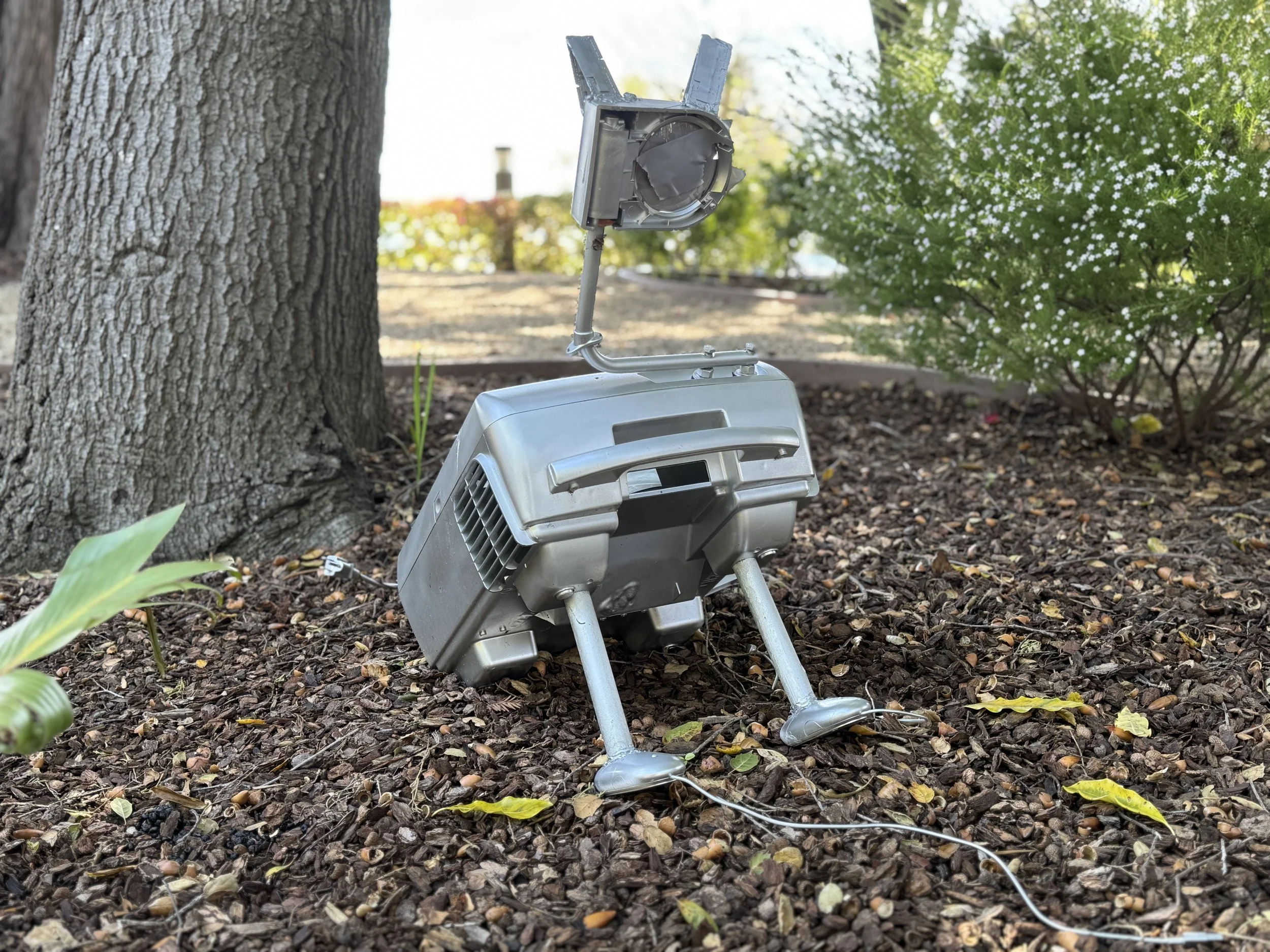DIGITAL NATURE SCULPTURES

About the series.
The Digital Nature Sculptures series is largely intended to portray an optimistic relationship between the environment and Crystal Springs Uplands School’s e-waste.
As a modern American consumer of technology—but also as a theater tech—I wanted to repurpose old equipment and parts to create something that can still be beautiful. The motivation wasn’t only to utilize the outdoor space, but also to do it by recycling found objects.
The legs of the tiger structure, for instance, are made of decommissioned spotlights. The bodies of the dog and turtle sculptures, too, are made of outdated classroom projectors.
Even the keyboards and circuit boards on the totem pole structure have found their place in the art after being discarded from old TVs and classroom computers.
An important aspect of the outdoor installation was to enrich the space by highlighting the relationships that lie in seemingly mundane environments.
The sculptures are intentionally positioned to evoke a sense of attraction between them—particularly an attraction that pulls the dog, turtle, and tiger towards the totem pole.
I think it’s beautiful that the physical construction and spatial orientation of the structures gives them body language and attention. The other relationships at play in the garden are between the metal and nature.
One of the most surprising parts of the project was actually when the art started to interact with the garden in ways that I never expected: there were days when the totem pole would lose its fight with the wind, or days where animal feces was found all over the garden.
There was even a day that the dog sculpture set the wood chips in front of it on fire with a magnifying lens—this one gave us a real “uh-oh” moment.

In hindsight, the process of installing the art revealed the exciting dynamic that technology develops around nature just as much as the final garden does so. The juxtaposition of the sculptures’ industrial look with the beauty of the garden, too, points towards an idea of coexistence that I often overlook.
It’s easy for me to catastrophize the role of technology in our lives, so these sculptures and their placement became a way for me to challenge myself to see the potential for technology and waste rather than just the damages. Finally, the metallic finish brings everything together in the matte, Louise Mendelson style but with an industrial twist.
It’s expected that the audience has the opportunity to walk among the sculptures, to immerse themselves and see, from multiple perspectives, how the structures and shapes have turned the discarded—trash, woodchips, and metal—into a set of cooperative relationships in the space.



